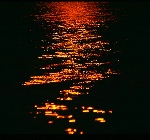How to use Your Flash Properly
many people consider the flash an item that allows you to take pictures at night.
Actually, it usually doesn’t do this very well: either it’s not powerful enough (I have seen people trying to light up the ocean with a small camera flash), or if it is, it sheds a harsh light on the scene making you lose all this beautiful atmosphere.
I mostly use my flash in broad daylight or as an additional source of light in low light conditions.
Let me explain: even slide film cannot deal very well with strong contrasts. Under such circumstances, one part of the picture may turn out overexposed while other parts are just black. Very often, it’s the sky that will turn white and the foreground getting to dark.
If you use a ”fill flash” on the foreground this portion of your picture will brighten up, while the camera will automatically reduce the ambient light making the sky darker. The result is a perfect exposure. If done right, you won’t see that a flash was used at all, just wonder: how did the photographer do this?
(An alternative may be to use a gradual grey filter on the bright areas to reduce light there)
Also, the sun may produce shadows on your subject (e.g.. when taking a portrait). A bit of fill flash softens the shadow and again results in a more balanced picture.
When using flash, you should know its reach. A small inbuilt camera flash will only reach very close objects, depending on your film or the ISO/ASA setting of your digital camera.
Bigger external flashes are much stronger and reach much further. Also, you may incline them so that the beam of light bounces back from the ceiling or use a softbox both resulting in a softer light.
If you do not have a bouncer or softbox, you can also use 1-2 layers of a paper handkerchief fixed with duct tape over your flash. Of course, all of this will diminish the light output and decrease the reach of the flash.
Conversely, a fresnel lens may be useful to extend reach.
Many cameras allow you to choose whether you want to use a maximum of ambient light and just a little fill flash or manly rely on your flash. Some even give you the chance to manually reduce flash output giving you a very subtle effect (my Dynax 9 does that for example).
Last not least, you often can unchain your main flash and even combine it with your inbuilt camera, so that the light does not hit your object directly from in front f your subject.
If your equipment allows you doing this, try out different setups, the results can be really fascinating!
Oh and by the way, this also helps to avoid red eyes.
Speaking of red eyes: many cameras now have a clever function that sends a number of flashes before the “real” one. The pupil will narrow as a response to the first flashes and you won’t see the reflection of the red blood vessels in the picture.
Quite effective. Better warn people before - this can be quite irritating. Don’t use this on shy animals.

